Conifer tip syrup is a light and bright earthy and citrus tasting syrup that is delicious all year long. This is a great way to use these edible trees in spring or summer cocktails, or freeze it to use for the holidays!
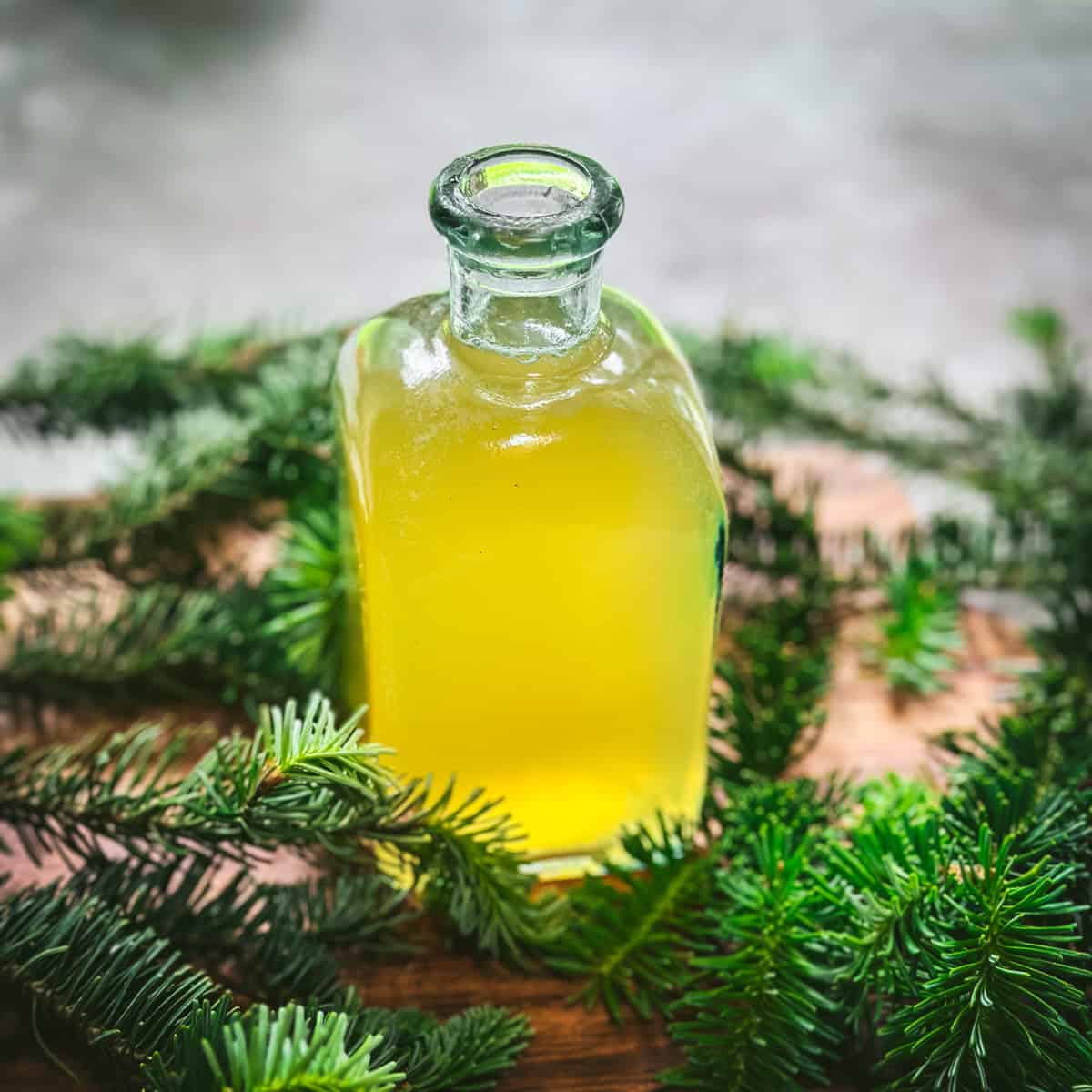
Want to save this post for later?
Edible Tree Tips
Many conifer trees are edible, and while they may give you a winter and holiday vibe with recipes like pine needle tea, conifer infused vodka, pine needle soda, or tree shaped pine needle cookies.
However, spring and early summer is the best time to forage for conifer tips. Any edible conifer tips work to make conifer tip syrup, so make sure you consult a guide to identify conifers and foraging for conifer needles before you gather any tips.
Once you know which conifers are safe to eat, and which are toxic (namely the yew family), then it’s good to take a look at how to forage conifer tips.
The tips of conifer trees are the new growths that develop in spring at the end of each branch. They are usually lighter in color than the main needles on the tree. They’re flavorful and tender, as well as health beneficial with tons of vitamin C.
Pine Tree Tips
These varieties of pine trees are good to use for this recipe:
- eastern white pine (Pinus strobus)
- western white pine (Pinus monticola)
- red pine (Pinus resinosa)
- sugar pine (Pinus lambertiana)
Important: Ponderosa pine (Pinus ponderosa) and lodgepole pine (Pinus contorta) are not recommended to be used internally by pregnant women as there is a chance that they could cause miscarriage in large doses.
Fir Tips
Most fir species are safe to use including:
- white fir (Abies concolor)
- grand fir (Abies grandis)
- noble fir (Abies procera)
- balsam fir (Abies balsamea)
Douglas-fir (Pseudotsuga menziesii), which is not a true fir but is still edible, has tips can also be used.
I used fir tips to make this syrup and it was delightful!
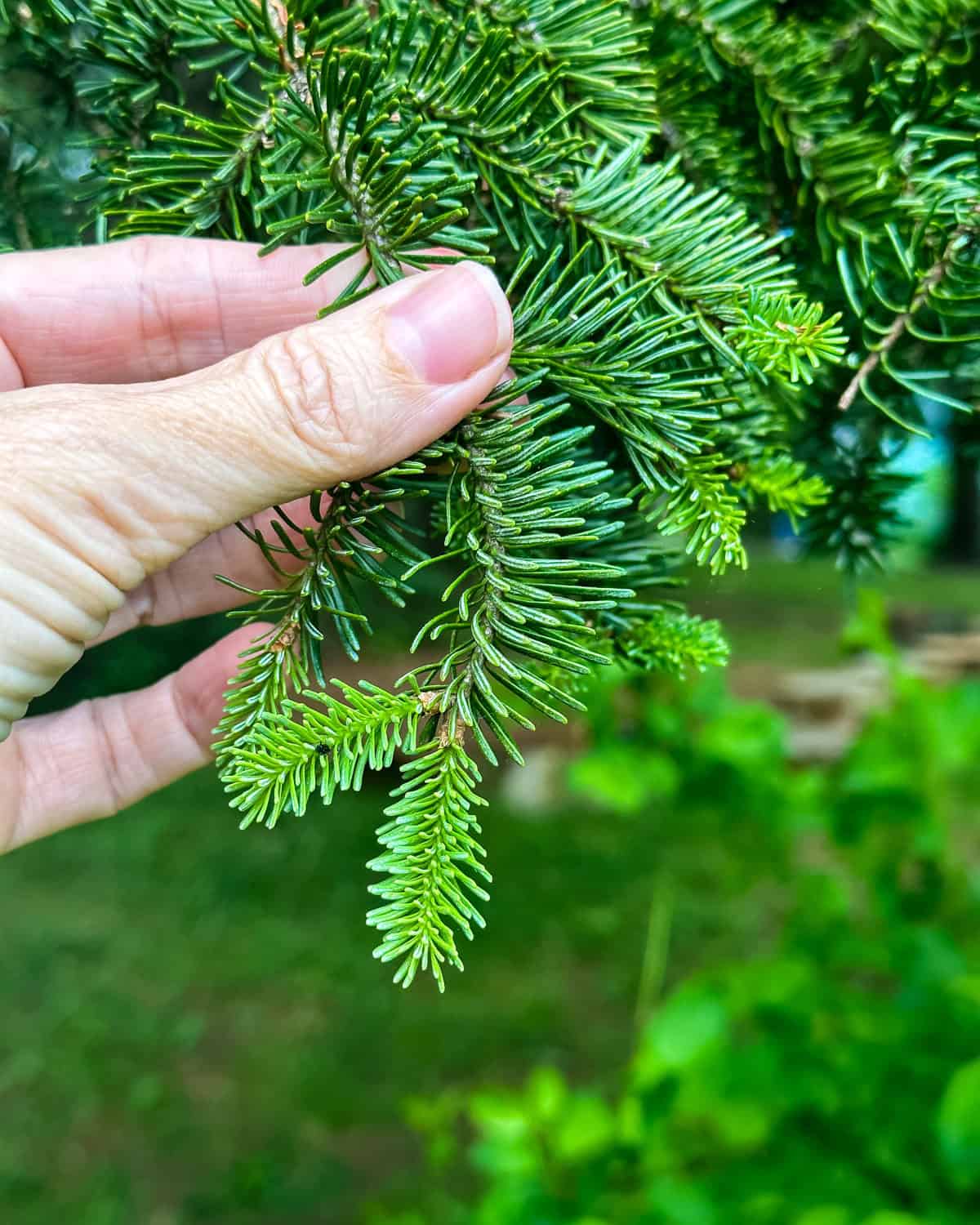
Spruce Tips
According to my research, all spruce trees are edible and non-toxic. Here are a few common spruce species to look for:
- blue spruce (Picea pungens)
- Norway spruce (Picea abies)
- Sitka spruce (Picea sitchensis)
- white spruce (Picea glauca)
Spruce tips are a popular springtime treat, and they make a lovely spruce tip syrup! I love making spruce beer with them, too.
Hemlock Tree Tips
Not to be confused with poison hemlock which is a highly toxic plant, the hemlock tree is a conifer that is edible and health beneficial.
There are three common species of hemlock trees:
- western hemlock (Tsuga heterophylla)
- eastern hemlock (Tsuga canadensis)
- mountain hemlock (Tsuga mertensiana)
Fir Tip Syrup Recipe
Spruce tip syrup is popular (and rightfully so), but personally I prefer fir tips for this syrup. They have a lighter flavor that suits summertime cocktails and appetizers perfectly.
Any type of edible conifer tips will be delicious in this syrup though!
Since it’s made with the tips, this syrup will be lighter and more delicate in flavor than if regular pine, fir, or spruce needles are used, but it will still have that delicious conifer flavor.
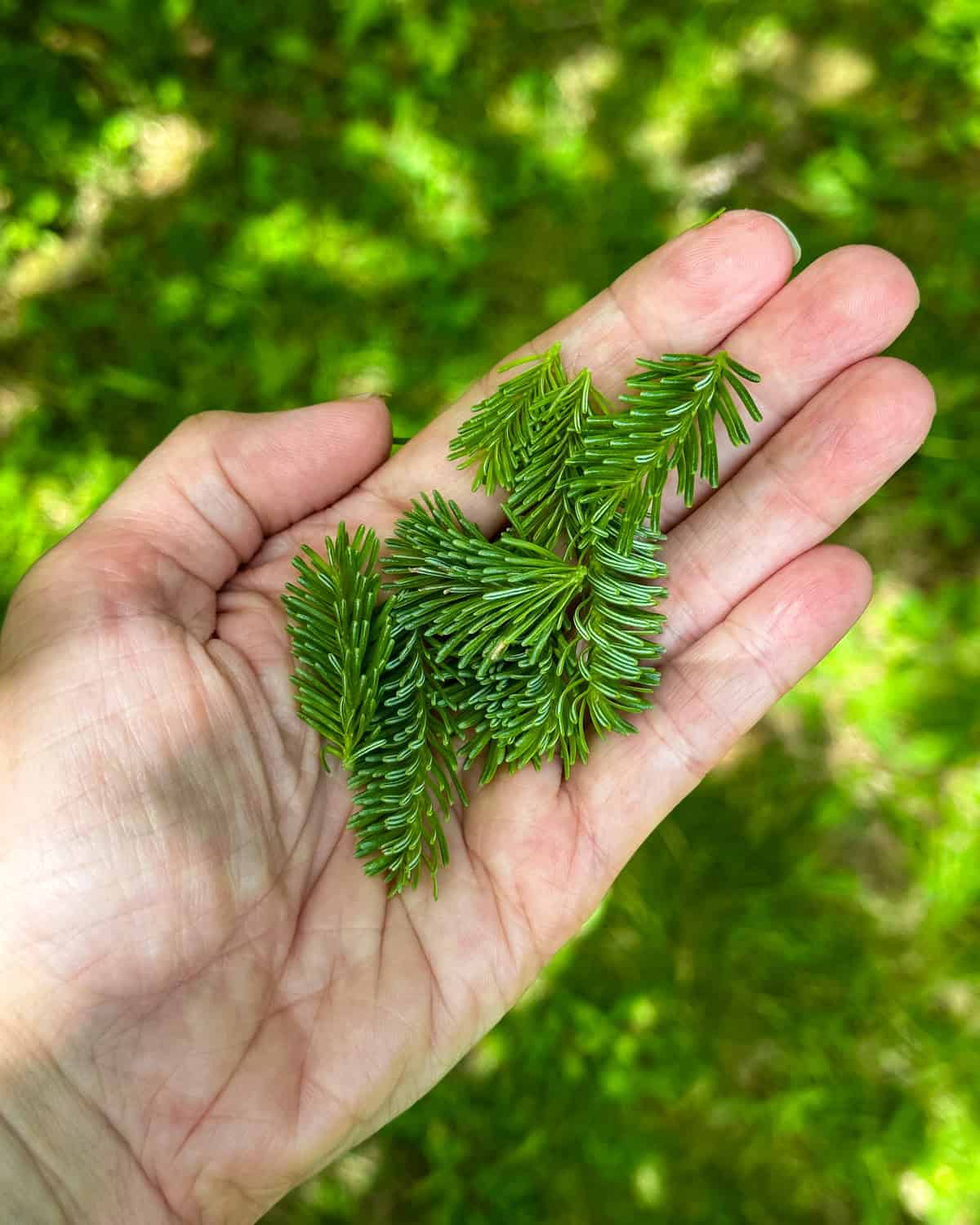
Ingredients
- Conifer tips: I recommend using spruce, fir, Douglas-fir, pine, or hemlock.
- Raw honey
How to Make Conifer Tip Syrup
First, fill a pint jar with the edible conifer tips of your choice.
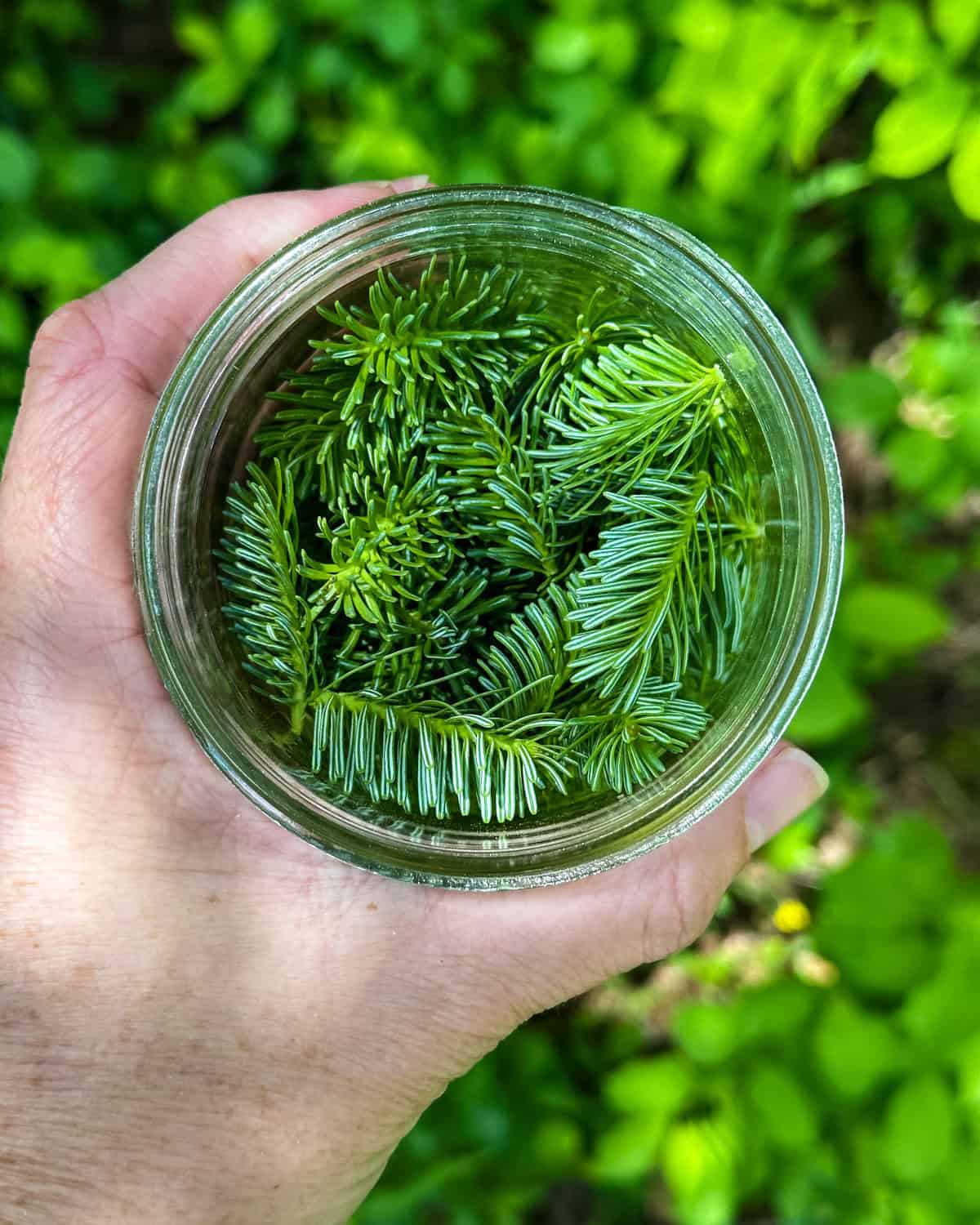
Bring the water to a boil, and pour it over the conifer tips.
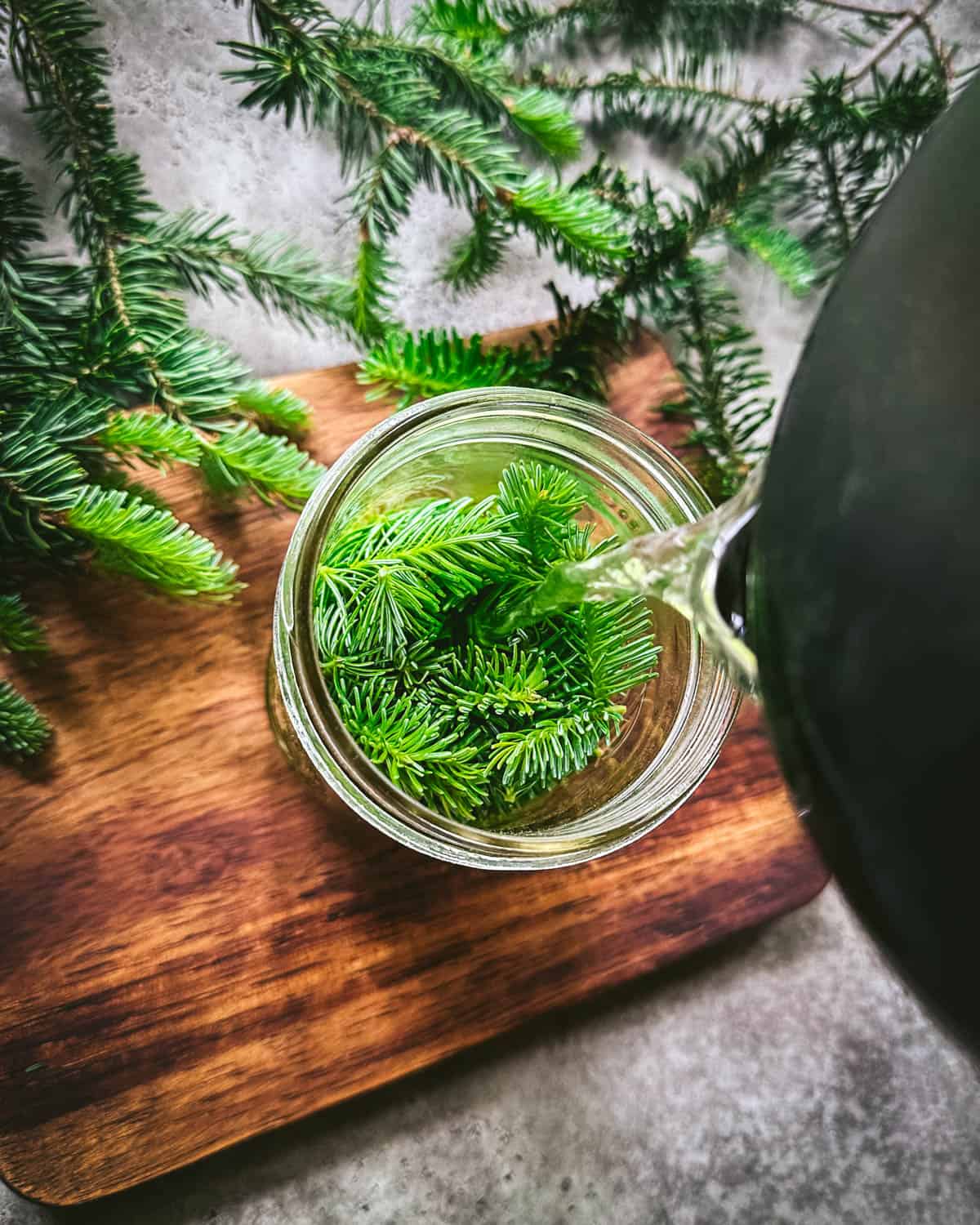
Let the conifer tip tea steep until it cools down completely to room temperature. It will smell amazing!
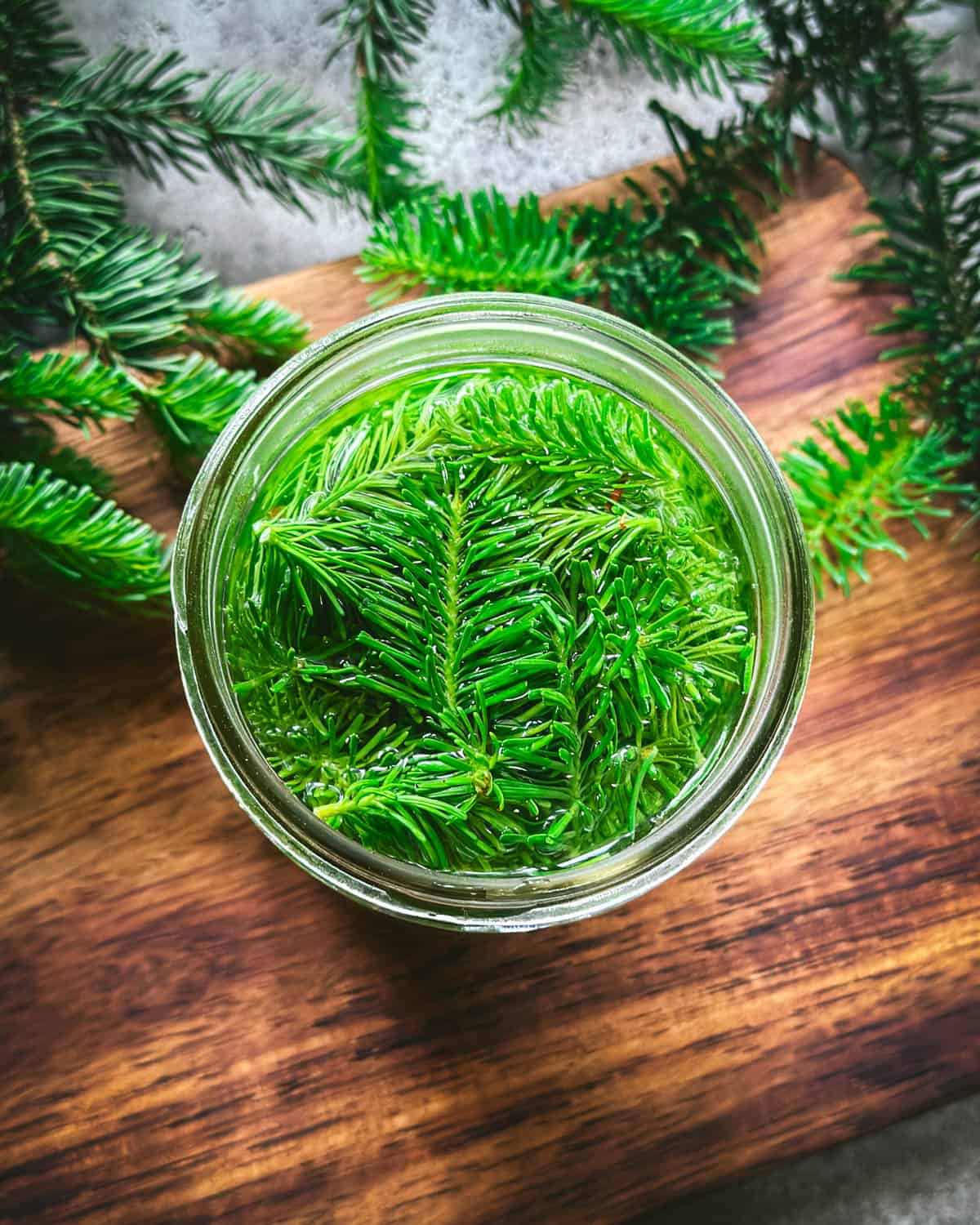
Now strain out the tree tips, and measure out one cup of the tea.
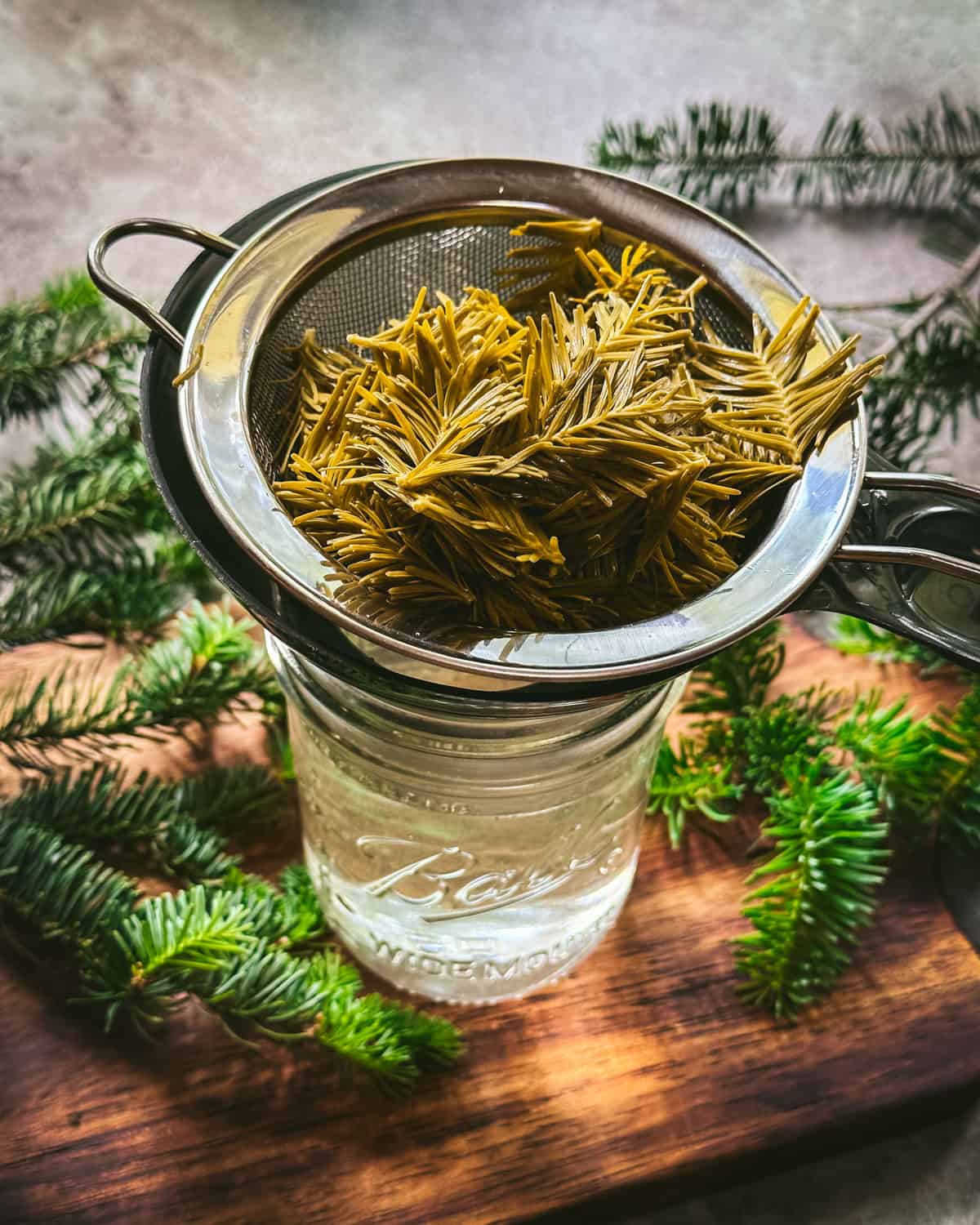
Then add the raw honey to the conifer tip tea, and stir it until it’s totally combined.
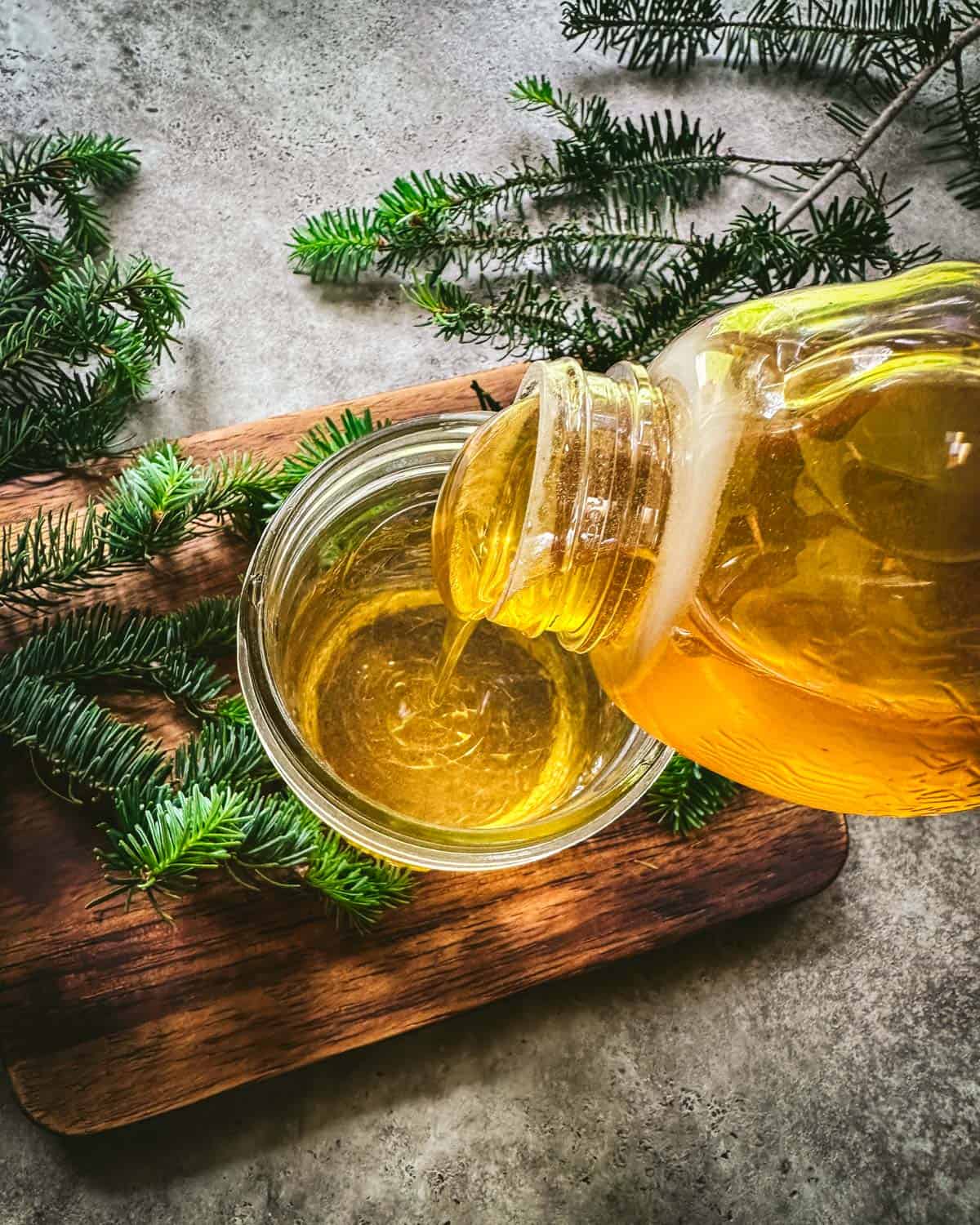
Note: More or less honey can be added to taste depending on the desired sweetness level.
How to Store and Use
Now that you’ve made this deliciously simple recipe using fir tips, there are lots of amazing ways to use it in spring or summer cocktails or freeze it to use for the holidays!
I like freezing syrups in ice cube trays for longer life so I can just use a little at a time. Otherwise, keep it in the refrigerator for up to 3 or 4 weeks.
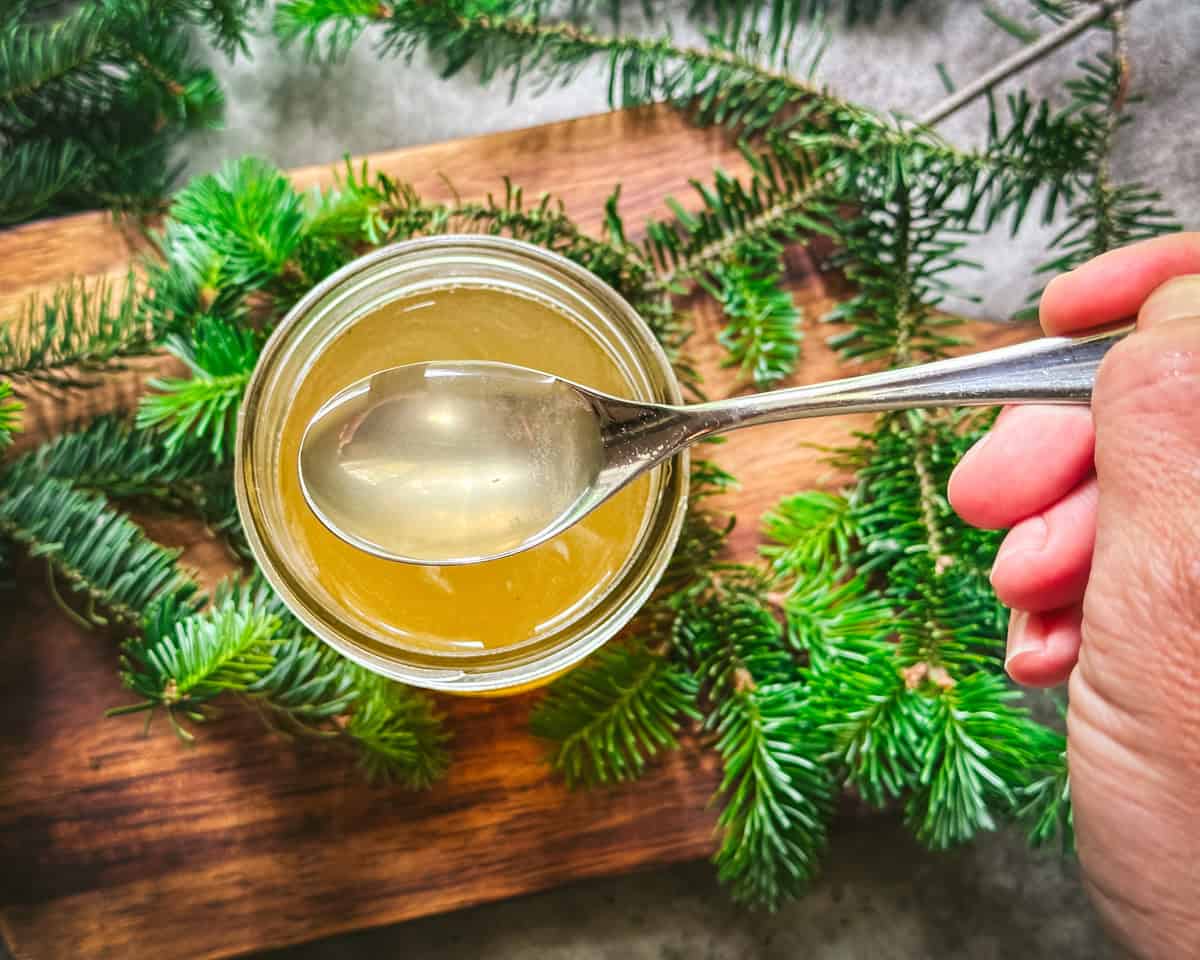
The taste is anywhere from bright and citrusy to warm and earthy depending on the type of conifer, so this syrup really is a year round treat.
Use conifer tip syrup drizzled over chèvre, or as a glaze for meats. Stir it into lemonade or sparkling water to make a mocktail, or use it in a cocktail.

This syrup is also a delicious way to sweeten tea, add it to a salad dressing, or use the ice cubes to freshen up your water any time of year!
More Botanical Syrup Recipes
- Lilac Syrup
- Dandelion Syrup
- Rhubarb Syrup
- Wild Violet Syrup
- Forsythia Flower Honey Syrup
- Elderberry Syrup
Conifer Tip Syrup
Ingredients
- 2 cups conifer tips fir, Douglas-fir, spruce, pine, or hemlock
- 2 cups water
- 1 cup raw honey
Instructions
- Fill a pint jar with conifer tree tips.
- Bring the water to a boil and pour over the tips. Let the conifer tip tea steep for several hours until it has completely cooled to room temperature.
- Strain out the conifer tips, then measure out one cup of conifer tip tea.
- Add the honey to the tea and stir until combined. More or less honey can be added to taste depending on the desired sweetness level.
- Store the fir tip syrup in the refrigerator and it will keep for 3-4 weeks.

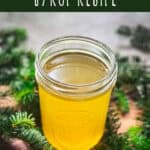
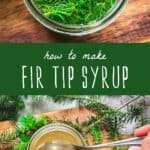
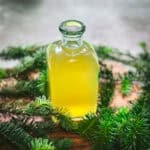

I grew up on this stuff. My mother was from Austria and made this for our coughs. The process was different. She picked a bunch of early fir tips and put them in a large jar and layered them with white sugar. Then she places it in the sun until a syrup is emitted. Maybe a few weeks? Yes, white sugar isn’t nutritious but it also helps the mixture to last! I have some left of her making that is like 10 years old. That’s a consideration…and of course it’s inexpensive to make.